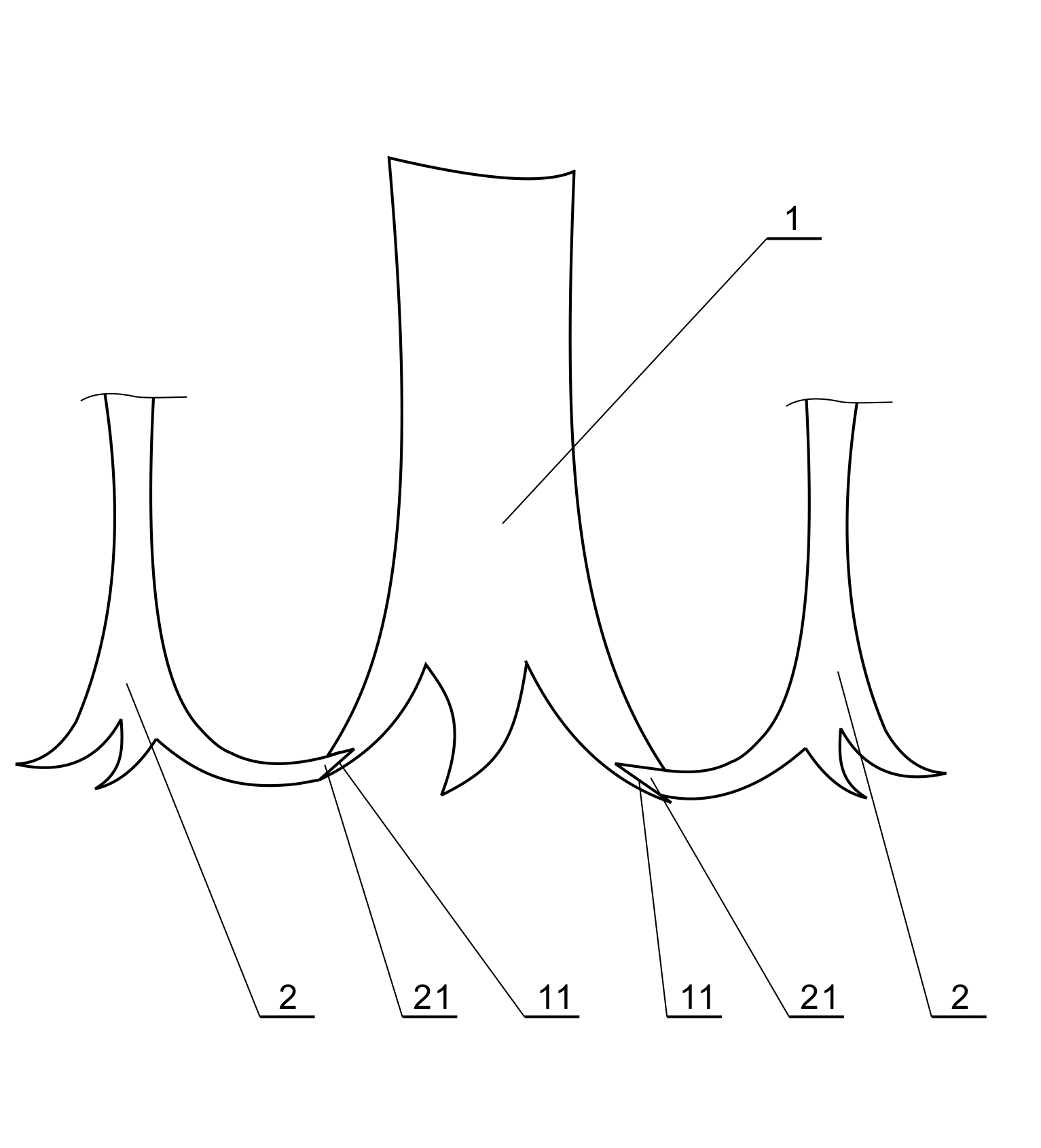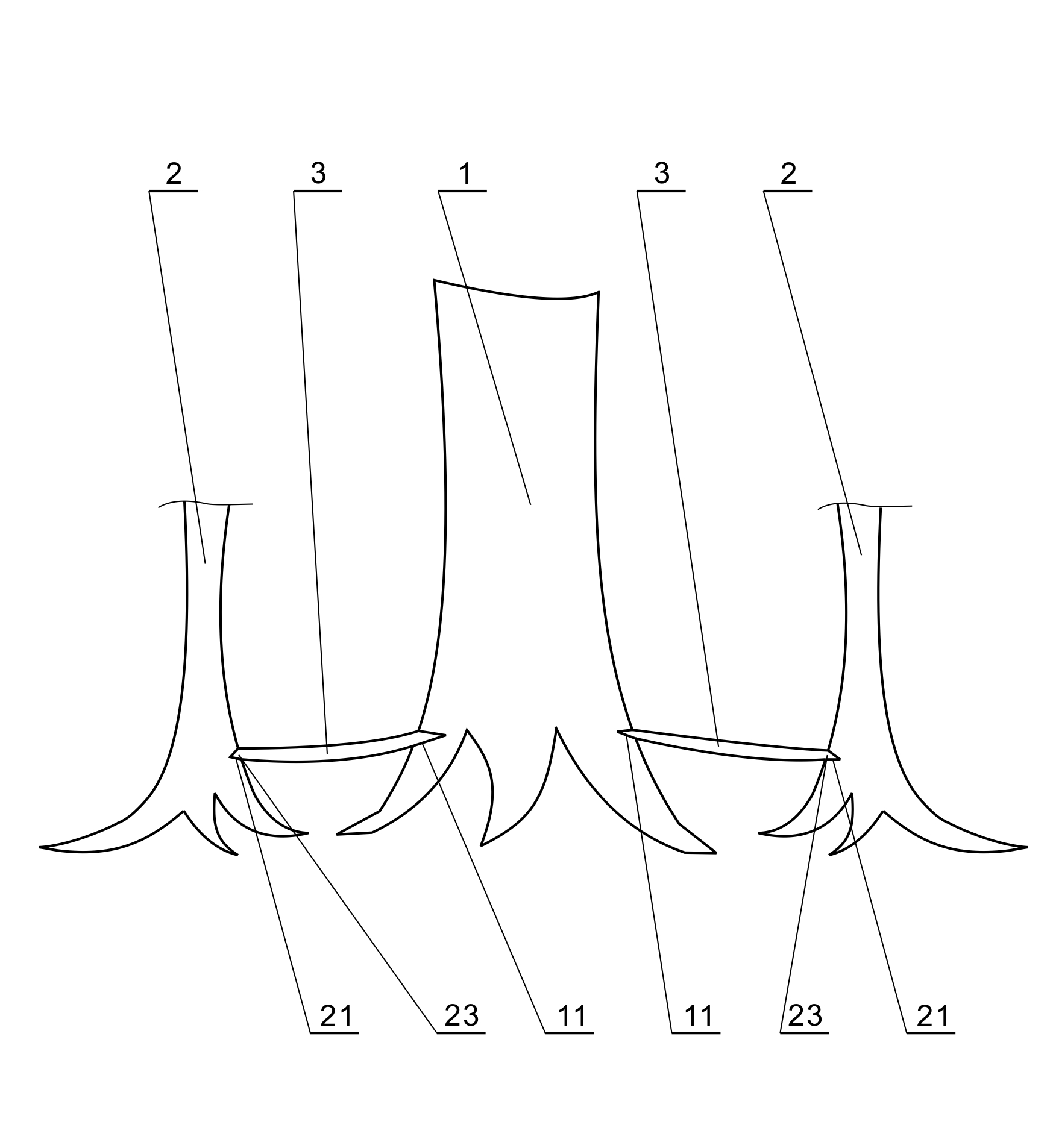Method for repairing root system injury of rare old tree
A restoration method and tree technology, applied in the field of forest restoration, can solve problems such as the lack of scientific and effective restoration methods, the impact on the healthy growth and development of trees, and the difficulty in normal function of the root system, etc., to achieve the continuation of landscape symbolic significance, obvious scientific research value, and vitality Recovery effect
- Summary
- Abstract
- Description
- Claims
- Application Information
AI Technical Summary
Problems solved by technology
Method used
Image
Examples
Embodiment 1
[0026] Take the camphor tree growing in a scenic spot in Shanghai as an example; its age is 400 years, its height is 25 meters, its trunk diameter is 100 cm, and its crown diameter is 15 meters; the recipient tree is a 10-year-old camphor tree with a tree height of 10 meters and a trunk diameter of 12 cm , crown diameter 5 meters;
[0027] The method of grafting the lateral roots of the recipient tree and the donor tree is used to repair the root system function of the damaged recipient tree, which specifically includes the following steps:
[0028] a) Determine the repair plan: confirm that the ancient trees are in a weak growth state due to root damage. After checking, the root system of the ancient trees is damaged, and the damage degree of one side of the root system is moderate. The repair plan determined according to the degree of damage is the repair of a single lateral root, and the timing of repair Choose spring.
[0029] b), transplanting the donor tree: according t...
Embodiment 2
[0034] Take the ginkgo tree growing in a scenic spot in Shanghai as an example; the tree is 500 years old, the tree height is 28 meters, the trunk diameter is 120cm, and the crown diameter is 18 meters; the recipient tree is a 10-year-old ginkgo tree, the tree height is 11 meters, and the trunk diameter is 13cm , crown diameter 7 meters;
[0035] The method of grafting the lateral roots of recipient trees and multiple donor trees is used to restore the root system function of the damaged recipient trees, which specifically includes the following steps:
[0036]a) Determine the repair plan: confirm that the ancient trees are in a state of weakened growth due to root damage. After investigation, it is confirmed that the root systems of the ancient trees are damaged in many places. Among them, the damage degree of the root system on the east and west sides is moderate, and the repair plan determined according to the degree of damage is multiple. For the repair of lateral roots, t...
Embodiment 3
[0042] Take the Pistacia chinensis growing in a scenic spot in Shanghai as an example; its age is 550 years, the tree height is 29 meters, the trunk diameter is 130cm, and the crown diameter is 20 meters; the recipient tree is 10-year-old Pistacia chinensis, the tree height is 10 meters, and the trunk diameter is 12cm , crown diameter 6 meters;
[0043] The root system function of the damaged recipient tree is repaired by grafting the scion between the root system of the recipient tree and the donor tree, which specifically includes the following steps:
[0044] a) Determine the repair plan: confirm that the ancient trees are in a weak growth state due to root damage. After investigation, it is confirmed that the roots of the ancient trees are damaged in many places, focusing on the southeast and northwest sides. The degree of damage is serious. The repair plan determined according to the degree of damage is For the repair of all root systems, the time for repair is spring.
...
PUM
 Login to View More
Login to View More Abstract
Description
Claims
Application Information
 Login to View More
Login to View More - R&D
- Intellectual Property
- Life Sciences
- Materials
- Tech Scout
- Unparalleled Data Quality
- Higher Quality Content
- 60% Fewer Hallucinations
Browse by: Latest US Patents, China's latest patents, Technical Efficacy Thesaurus, Application Domain, Technology Topic, Popular Technical Reports.
© 2025 PatSnap. All rights reserved.Legal|Privacy policy|Modern Slavery Act Transparency Statement|Sitemap|About US| Contact US: help@patsnap.com



